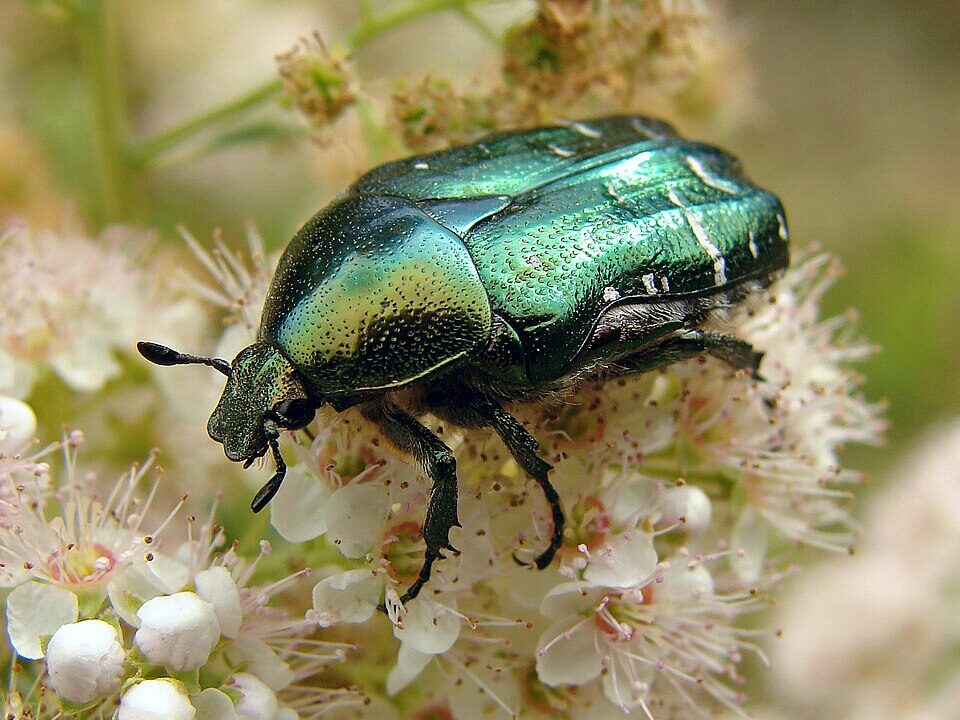
Cetonia aurata (Rose Chafer)
Overview
Cetonia aurata, commonly known as the rose chafer or green rose chafer, is a striking beetle belonging to the family Scarabaeidae. It is known for its brilliant metallic green coloration, though some individuals may exhibit golden, copper, or even purplish hues depending on light and angle.
Description
Adults typically measure between 14–20 mm in length. Their elytra have a smooth, shiny surface, often speckled with fine white lines or dots. Despite their hard appearance, the wing covers are fused, and the beetles fly using a set of membranous wings that unfold from beneath. When flying, they lift their elytra slightly rather than opening them fully like most beetles.
Habitat and Distribution
Cetonia aurata is widely distributed across Europe, parts of North Africa, and into Central and South Asia. It is commonly found in gardens, parks, woodlands, and meadows—anywhere flowering plants are present. Adults are most active during warm, sunny days from late spring through summer.
Diet and Behavior
The adults primarily feed on flower pollen, nectar, and petals, especially from roses, thistles, and elderflowers. They are often seen basking on flowers in the sun. Larvae, on the other hand, live in decaying wood, compost heaps, or rich soil where they consume decomposing organic matter, playing a role in nutrient cycling.
Life Cycle
The life cycle includes a larval stage that lasts one to two years, depending on environmental conditions. Pupation occurs in the soil or in decaying wood. Adults emerge in spring and typically live for several months. The beetle undergoes complete metamorphosis, transitioning through egg, larva, pupa, and adult stages.
Ecological Importance
Cetonia aurata contributes to pollination, although its role is more incidental compared to specialized pollinators. Its larvae aid in breaking down organic material, making it a helpful species in garden composting and forest floor health.
